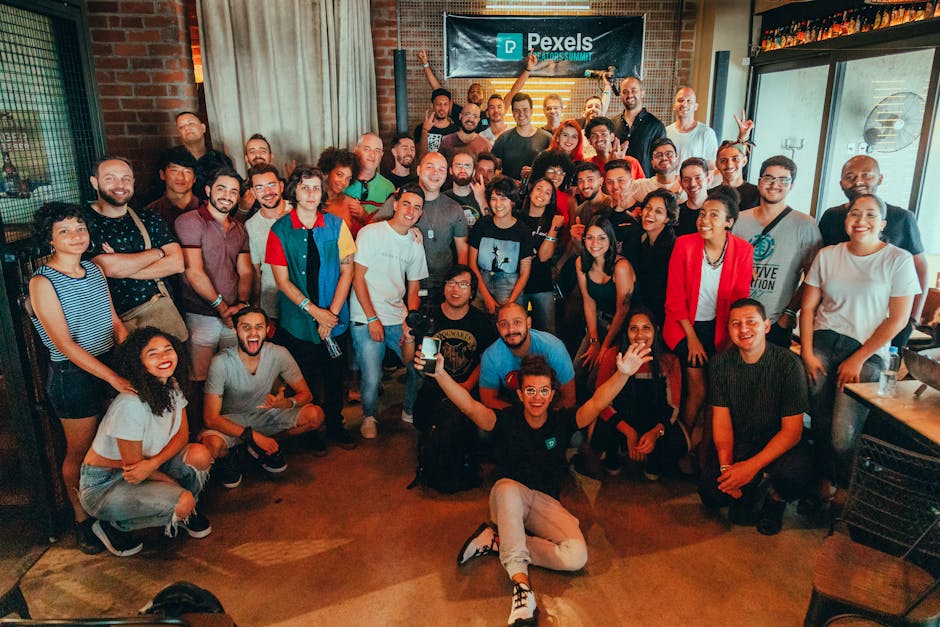In an increasingly interconnected world, the concept of a “digital product” has evolved from a niche offering to a cornerstone of the global economy. These intangible assets, delivered and consumed entirely in digital formats, are reshaping industries, driving innovation, and transforming how businesses interact with their customers. From streaming services to educational platforms, and from software applications to digital art, digital products are at the forefront of the ongoing digital revolution, powered by advancements in digital technology.
This comprehensive guide delves into the multifaceted world of digital products, exploring their definition, market dynamics, strategic advantages, and the critical role of digital technology trends. We will examine the economic impact of these products, highlight successful case studies, and provide actionable insights into their creation and marketing. Understanding digital products is not merely about recognizing their prevalence; it’s about grasping the fundamental shifts they represent in commerce, consumption, and value creation in the 21st century.
Defining Digital Products: Core Concepts and Characteristics
A digital product is fundamentally an intangible, software-enabled asset or service that is created, distributed, and consumed in a digital format without a physical form. This broad definition encompasses a vast array of offerings, from simple e-books to complex artificial intelligence (AI) applications. The essence of a digital product lies in its non-physical nature, allowing for instant delivery and global reach without the logistical constraints of physical goods.
What Constitutes a Digital Product?
The core of a digital product is its existence solely in a digital realm. Unlike physical goods that require manufacturing, shipping, and storage, digital products are bits and bytes that can be replicated infinitely at virtually no additional cost. This characteristic underpins many of their economic advantages and strategic implications. For instance, a software license, once developed, can be sold to millions of users without incurring per-unit production costs, leading to high-profit margins.

Key Characteristics of Digital Products
Understanding the defining characteristics of digital products is crucial for anyone looking to develop, market, or invest in them. These traits differentiate them significantly from traditional physical goods and services:
- Intangibility: Digital products have no physical form. They cannot be touched, held, or stored in a physical warehouse. This is their most fundamental characteristic, enabling unique distribution and consumption models.
- Reproducibility: Once created, a digital product can be duplicated an infinite number of times at near-zero marginal cost. This allows for massive scalability and global distribution without increasing production expenses.
- Instant Delivery: Digital products can be delivered to customers immediately upon purchase, often through downloads or streaming. This eliminates shipping times and costs, enhancing customer satisfaction and operational efficiency.
- Updatability and Modifiability: Unlike physical products, digital products can be easily updated, patched, or modified post-release. This allows developers to continuously improve features, fix bugs, and respond to user feedback, ensuring product relevance and longevity.
- Non-Exclusivity (often): Many digital products, especially software or media, can be used by multiple people simultaneously or accessed from various devices. While licensing agreements often restrict this, the inherent nature of the digital format allows for broad access.
- Dependency on Technology: Digital products require specific digital technology solutions for their creation, distribution, and consumption. This includes devices (computers, smartphones), internet connectivity, and software platforms.
Examples of Digital Products
The range of digital products is vast and continues to expand with technological advancements. Here are some prominent examples:
- Software Applications: Operating systems, productivity suites (e.g., Microsoft Office, Adobe Creative Suite), mobile apps (e.g., social media, gaming apps), and enterprise software (e.g., CRM, ERP systems).
- Digital Media: E-books, audiobooks, digital music (e.g., MP3s, streaming services like Spotify), streaming video (e.g., Netflix, YouTube), digital photography, and digital art.
- Online Courses and Educational Content: Webinars, online tutorials, membership sites offering exclusive content, and certifications. Platforms like Coursera and Udemy are built entirely on digital educational products.
- Templates and Digital Assets: Website themes, graphic design templates, stock photos, fonts, sound effects, and video assets used by creators.
- Subscription Services: Access to premium content, software-as-a-service (SaaS) applications, online communities, and exclusive digital libraries.
- Gaming: Video games (downloadable or cloud-streamed), in-game items, virtual currency, and expansions.
- Digital Product Passports: Emerging as a key trend, these provide digital information about a product’s lifecycle, supply chain, and sustainability credentials, crucial for traceability and compliance in various industries (GM Insights).
Market Landscape and Growth of Digital Products (2024-2025)
The digital product market is not just growing; it’s exploding, becoming a dominant force in the global economy. Driven by widespread internet adoption, mobile device proliferation, and advancements in digital technology trends like AI and blockchain, this sector is redefining commerce and consumer behavior. The data from 2024-2025 paints a clear picture of robust expansion and significant economic impact.
Market Value and Growth Projections
The sheer scale of the digital product market is staggering. According to Whop, digital products generated over $2.5 trillion in value annually by 2025, constituting approximately 6% of the combined GDP in studied countries (Whop). This highlights their integral role in modern economies. The broader digital goods market, which includes various digital products, was valued at approximately $124.32 billion in 2025 and is projected to reach an astounding $416.21 billion by 2030, demonstrating a remarkable 27.34% Compound Annual Growth Rate (CAGR) (Mordor Intelligence). This growth trajectory underscores the immense opportunities within this sector.
Spending Breakdown in Digital Media (2024)
Consumer spending on digital media provides granular insights into which categories are driving this growth. In 2024, global spending on digital media exceeded $560 billion, marking a significant 12.5% increase year-over-year (Whop). The distribution of this spending reveals key consumer preferences:
- Video games dominated, accounting for $282 billion, or 50% of total spending. This highlights the immense economic power of the gaming industry as a digital product category.
- Video on demand (VOD) followed with $182 billion, representing 33% of the spending, showcasing the continued rise of streaming content.
- E-publishing and digital music contributed $55 billion (10%) and $41 billion (7%) respectively, indicating steady demand for digital books and audio.
Consumer Behavior and Usage Trends
The widespread adoption of digital products is deeply intertwined with changing consumer habits and technological access. In 2025, a significant 68% of internet users aged 16 and above paid for digital content monthly (Whop). This widespread willingness to pay for digital content signifies a mature and robust market. Mobile devices continue to be a primary gateway, with global ownership reaching 71% in 2025. The average monthly app usage stood at 26 apps, with 7 unique apps used daily, reflecting a 9.2% year-over-year increase (Whop). This data underscores the importance of mobile-first strategies in digital product distribution.

The Rise of AI in Digital Products
Artificial intelligence is rapidly becoming a transformative force within the digital product landscape. AI-related app downloads surged to 17 billion in 2024, a staggering 240% increase since 2019, accounting for 13% of all app downloads. Even more impressively, revenue from AI apps rose dramatically by 4,567% from $30 million in 2022 to $1.4 billion in 2024 (Whop). This exponential growth highlights AI’s potential to create highly valuable and engaging digital products, from intelligent assistants to personalized content recommendations and advanced analytical tools. This trend is a clear indicator of where significant investment and innovation in digital technology solutions are heading.
| Digital Media Category | Global Spending (Billion USD) | Percentage of Total Spending | Year-over-Year Growth |
|---|---|---|---|
| Video Games | $282 | 50% | Significant Growth |
| Video on Demand (VOD) | $182 | 33% | Consistent Growth |
| E-publishing | $55 | 10% | Steady Growth |
| Digital Music | $41 | 7% | Steady Growth |
| Total Digital Media | $560+ | 100% | 12.5% Increase |
Diverse Types of Digital Products and Their Applications
The ecosystem of digital products is incredibly diverse, catering to a wide range of consumer and business needs. Each type leverages digital technology best practices to deliver value, from entertainment and education to productivity and creative expression. Understanding these categories is essential for identifying market opportunities and developing effective digital technology strategies.
Categorization by Function and Industry
Digital products can be broadly categorized based on their primary function or the industry they serve. This helps in understanding their specific value propositions and target audiences.
- Content-Based Digital Products: These are primarily about information and entertainment.
- E-books and Audiobooks: Digital versions of traditional books, accessible on various devices. They offer convenience, portability, and often lower costs than physical copies.
- Digital Music and Podcasts: Tracks, albums, and audio series available for download or streaming. Services like Spotify and Apple Music have revolutionized music consumption.
- Streaming Video (VOD): Movies, TV shows, and original content delivered on demand. Netflix, Disney+, and Hulu are prime examples.
- Digital Art and Photography: Stock photos, illustrations, digital paintings, and NFTs (Non-Fungible Tokens) representing unique digital assets.
- Software and Application-Based Digital Products: These provide tools and functionalities.
- Productivity Software: Word processors, spreadsheets, presentation tools, and project management applications (e.g., Microsoft 365, Google Workspace, Asana).
- Creative Software: Graphic design, video editing, 3D modeling, and music production software (e.g., Adobe Creative Cloud, Figma, Blender).
- Mobile Applications (Apps): Utilities, games, social media, health & fitness, and finance apps for smartphones and tablets.
- SaaS (Software as a Service): Cloud-based software accessed via subscription, eliminating the need for local installation and maintenance (e.g., Salesforce, Zoom, Slack).
- Educational and Skill-Based Digital Products: Focused on learning and personal development.
- Online Courses and Webinars: Structured learning programs delivered virtually, often with interactive elements and certifications (e.g., Coursera, Udacity, MasterClass).
- Membership Sites: Provide exclusive access to premium content, communities, and resources on a subscription basis.
- Digital Coaching and Consulting: Personalized guidance delivered through video calls, digital workbooks, and online platforms.
- Utility and Data-Based Digital Products: Offer practical tools or valuable information.
- Website Themes and Templates: Pre-designed layouts for websites, blogs, and e-commerce stores, allowing for quick setup.
- Fonts and Icons: Digital assets used by designers and developers to enhance visual interfaces.
- Data Products: Market research reports, analytics dashboards, and datasets sold to businesses for insights.
- Digital Product Passports: As mentioned, these are digital twins of physical products, containing verifiable information about their origin, materials, repairability, and environmental impact. They are critical for regulatory compliance and consumer transparency, especially in industries like fashion and electronics (GM Insights).
Applications Across Industries
Digital products are not confined to a single sector; their applications span nearly every industry:
- Education: From K-12 e-learning platforms to professional development courses and language learning apps.
- Healthcare: Telemedicine platforms, health tracking apps (like Fitbit), and digital diagnostic tools.
- Finance: Budgeting apps (like Mint), online banking platforms, investment tools, and cryptocurrency wallets.
- Retail: E-commerce platforms, virtual try-on apps, and digital catalogs.
- Manufacturing: CAD software, simulation tools, and digital twins for product design and process optimization.
- Creative Arts: Digital audio workstations, graphic tablets, and software for animation and special effects.
The versatility of digital products makes them indispensable tools for businesses and individuals alike, driving efficiency, fostering creativity, and enabling new forms of interaction and commerce.
Economic Impact and Monetization Trends in Digital Technology
The economic impact of digital products is profound, reshaping global commerce and creating new avenues for wealth generation. Their inherent characteristics—scalability, low marginal costs, and global reach—contribute to unique monetization models that differ significantly from traditional physical goods. Understanding these models and their underlying digital technology strategies is key to thriving in the digital economy.
High Profit Margins and Scalability
One of the most attractive economic aspects of digital products is their potential for exceptionally high-profit margins. Once the initial development costs are covered, the cost to produce and distribute additional units of a digital product is often negligible. This “near-zero marginal cost” allows businesses to scale rapidly without incurring proportional increases in operational expenses. For example, a software company can sell millions of licenses for its product without needing to manufacture, package, or ship physical copies, leading to significant profitability. This scalability is a cornerstone of digital technology solutions.

Key Monetization Trends (2024-2025)
The ways digital products generate revenue are constantly evolving, driven by consumer preferences and technological advancements. Several key trends are shaping the monetization landscape:
- Subscription Models: Subscriptions remain a dominant force, accounting for 57% of digital goods revenue in 2024 (Mordor Intelligence). This model provides recurring revenue, fosters customer loyalty, and allows for continuous product improvement. Examples include Netflix, Adobe Creative Cloud, and Spotify.
- Freemium Models: Offering a basic version of a digital product for free while charging for premium features or an ad-free experience. This allows for broad user acquisition and conversion of engaged users into paying customers.
- One-Time Purchases: Traditional model where customers pay a single fee for permanent access to a digital product, such as an e-book, a downloadable game, or a software license.
- In-App Purchases (IAPs): Common in mobile games and apps, allowing users to buy virtual items, currency, or unlock features within the application.
- Advertising: Many free digital products (e.g., social media platforms, free news apps) generate revenue through displaying advertisements to their user base.
- Affiliate Marketing: Promoting other products or services within a digital product and earning a commission on sales generated through referrals.
- NFTs and Blockchain Technologies: These are enabling new monetization strategies by providing verifiable digital ownership and perpetual royalties. NFTs allow creators to sell unique digital assets (art, music, collectibles) with transparent ownership records and even earn a percentage on future resales (Mordor Intelligence). This represents a significant shift in how digital scarcity and value are established.
Impact of Regulatory Changes
Regulatory environments are increasingly influencing digital product monetization. For instance, EU regulations like the Digital Markets Act are requiring major platforms to allow alternative billing methods, impacting transaction flows and fees (Mordor Intelligence). These changes can lead to more competitive pricing and diverse payment options for consumers, while potentially reducing platform fees for developers.
Regional Market Dynamics
The growth of digital products is not uniform globally, with regional insights revealing varying dynamics:
- Asia-Pacific: This region is a high-growth area, projected to achieve a 27.5% CAGR through 2030, primarily driven by rapid smartphone adoption and the widespread use of mobile wallets (Mordor Intelligence).
- North America: Led by the U.S., this region holds a significant market share (around 35%) in specialized segments like digital product passports (GM Insights), indicating maturity and strong adoption of advanced digital solutions.
- Emerging Markets: Countries like Germany, China, and Mexico are also expected to see substantial growth in digital product passport adoption, reflecting a global push towards transparency and sustainability in supply chains (GM Insights).
These regional differences highlight the need for tailored digital technology strategies that consider local market conditions, consumer preferences, and regulatory frameworks.
Strategic Advantages of Digital Products for Businesses
For businesses, embracing digital products offers a multitude of strategic advantages that can lead to increased profitability, wider market reach, and enhanced operational efficiency. These benefits stem directly from the inherent characteristics of digital goods, making them a compelling choice for modern enterprises looking to leverage digital technology best practices.
Cost-Efficiency and High Profit Margins
One of the most significant advantages is the dramatic reduction in production and distribution costs compared to physical goods. Digital products eliminate expenses related to raw materials, manufacturing, inventory storage, packaging, and shipping. Once a digital product is created, the cost to deliver additional copies is virtually zero. This allows for exceptionally high-profit margins, as the primary investment is in development and marketing, not in per-unit production. This cost structure enables businesses to reinvest more into product improvement or customer acquisition, fostering sustainable growth.
Global Scalability and Reach
Digital products can be distributed globally with unprecedented ease and speed. There are no geographical barriers, customs duties (for digital delivery), or physical logistics to contend with. A business can launch a digital product from anywhere and instantly make it available to customers worldwide. This global reach opens up vast new markets and customer segments that would be impractical or impossible to access with physical products. This inherent scalability is a core tenet of effective digital technology solutions.
Continuous Improvement and Agility
The ability to easily update, modify, and iterate on digital products post-launch is a powerful strategic advantage. Businesses can collect user feedback, analyze usage data, and quickly deploy improvements, bug fixes, or new features. This agile development cycle allows companies to remain highly responsive to market demands and customer needs, ensuring their products remain relevant and competitive. This continuous improvement loop is far more challenging and costly with physical goods, which often require new production runs for updates.
Diversified Revenue Streams and Business Models
Digital products enable a variety of flexible business models beyond traditional one-time sales. As discussed, subscription models provide stable, recurring revenue. Freemium models allow for broad user acquisition and conversion. The ability to offer tiered access, in-app purchases, or even licensing agreements provides businesses with multiple avenues for monetization, reducing reliance on a single revenue stream and increasing financial resilience. This flexibility is a key component of robust digital technology strategies.
Enhanced Customer Relationships and Data Insights
Digital products often facilitate direct and continuous interaction with customers. Through analytics, businesses can gather invaluable data on user behavior, preferences, and engagement patterns. This data provides deep insights that can inform product development, marketing efforts, and personalized customer experiences. Furthermore, the ability to offer ongoing support, updates, and community features through digital platforms strengthens customer relationships and fosters loyalty, leading to higher customer lifetime value.
Lower Barrier to Entry for Entrepreneurs
For individual entrepreneurs and small businesses, digital products offer a significantly lower barrier to entry compared to physical goods. The reduced need for capital investment in manufacturing, inventory, and logistics means that creators can launch digital products with relatively modest resources. This democratizes entrepreneurship, allowing a wider range of individuals to monetize their skills, knowledge, and creativity, from online course creators to digital artists and software developers.
Digital Product Development and Implementation Strategies
Developing and successfully implementing digital products requires a strategic approach that integrates technological expertise with market understanding and user-centric design. This section outlines key strategies and considerations for bringing digital products to life, emphasizing digital technology best practices from conception to launch and beyond.
Phase 1: Conception and Planning
The initial phase is critical for laying a strong foundation. It involves thorough market research, idea validation, and strategic planning.
- Market Research and Niche Identification:
- Identify unmet needs: What problems can your digital product solve? What gaps exist in the current market?
- Analyze target audience: Who are your potential users? What are their demographics, pain points, and preferences?
- Competitor analysis: Study existing digital products in your niche. What do they do well? Where are their weaknesses?
- Validate your idea: Before significant investment, test your concept with potential users through surveys, interviews, or landing page tests to gauge interest and gather feedback.
- Define Value Proposition and Features:
- Core value: Clearly articulate what unique benefit your digital product offers.
- Minimum Viable Product (MVP): Determine the essential features required for the first version of your product to be functional and valuable to early adopters. Avoid feature creep.
- Future roadmap: Outline potential future features and iterations based on long-term vision and user feedback.
- Business Model and Monetization Strategy:
- Choose a model: Decide on subscription, one-time purchase, freemium, advertising, or a hybrid model.
- Pricing strategy: Research competitive pricing and determine a price point that reflects value and market demand.
- Payment gateways: Plan for secure and convenient payment processing solutions.
Phase 2: Design and Development
This phase focuses on the actual creation of the digital product, emphasizing user experience (UX) and robust technical architecture.
- User Experience (UX) and User Interface (UI) Design:
- Wireframing and Prototyping: Create visual blueprints and interactive mockups to visualize the user flow and interface before coding.
- Intuitive Design: Ensure the product is easy to navigate, aesthetically pleasing, and provides a seamless user experience.
- Accessibility: Design with accessibility in mind to ensure the product can be used by individuals with diverse needs.
- Technical Development:
- Technology Stack Selection: Choose appropriate programming languages, frameworks, databases, and platforms based on product requirements and scalability needs.
- Agile Development: Employ iterative development methodologies (e.g., Scrum, Kanban) to build the product in short cycles, allowing for flexibility and continuous feedback integration.
- Quality Assurance (QA) and Testing: Rigorously test the product for bugs, performance issues, security vulnerabilities, and usability across different devices and environments.
- Content Creation (if applicable):
- For e-books, courses, or digital media, this involves writing, recording, editing, and formatting the content to be delivered digitally.

Phase 3: Launch and Post-Launch
Launching a digital product is just the beginning. Ongoing marketing, support, and iteration are crucial for long-term success.
- Marketing and Distribution:
- Pre-launch buzz: Build anticipation through social media, email marketing, and content marketing.
- Launch strategy: Plan how and where the product will be launched (e.g., app stores, dedicated website, marketplaces).
- Digital marketing: Utilize SEO, paid advertising, content marketing, influencer collaborations, and social media to reach the target audience.
- Distribution platforms: Choose appropriate platforms for selling and delivering your digital product (e.g., Shopify for e-commerce, Thinkific for courses, Gumroad for various digital goods).
- Customer Support and Feedback Loop:
- Provide support: Offer clear channels for customer inquiries and technical assistance.
- Collect feedback: Implement mechanisms for users to provide feedback, report bugs, and suggest improvements.
- Iterate: Use feedback and analytics to continuously improve the product, releasing updates and new features based on user needs and market trends.
- Performance Monitoring and Analytics:
- Track key metrics: Monitor user engagement, conversion rates, retention, revenue, and customer acquisition costs.
- Analyze data: Use analytics tools to understand user behavior and identify areas for optimization.
By adhering to these structured phases and integrating digital technology best practices, businesses can significantly increase their chances of developing and implementing successful digital products that resonate with their target market and achieve sustainable growth.
Emerging Trends and Innovation in Digital Products
The digital product landscape is in a constant state of flux, driven by rapid technological advancements and evolving consumer expectations. Staying abreast of emerging trends is crucial for businesses to remain competitive and identify new opportunities for innovation. These trends are shaping the next generation of digital technology solutions and products.
Artificial Intelligence (AI) and Machine Learning (ML) Integration
AI and ML are no longer futuristic concepts; they are actively being integrated into digital products to enhance personalization, automation, and intelligence. The surge in AI-related app downloads and revenue (17 billion downloads in 2024, $1.4 billion revenue (Whop)) underscores this trend. Applications include:
- Personalized Experiences: AI algorithms analyze user data to offer highly customized content recommendations (e.g., Netflix), product suggestions (e.g., Amazon), and adaptive learning paths in educational apps.
- Intelligent Automation: AI-powered chatbots for customer service, automated content generation tools, and smart assistants that streamline tasks.
- Predictive Analytics: Using ML to forecast user behavior, identify potential churn, or optimize marketing campaigns.
- Generative AI: Tools that can create unique content, from text and images to music and code, opening new possibilities for digital art, design, and content creation.
Blockchain and Web3 Technologies
Blockchain technology, including NFTs (Non-Fungible Tokens) and decentralized applications (dApps), is introducing new paradigms for digital ownership, authenticity, and monetization. While still nascent, Web3 promises a more decentralized internet where users have greater control over their data and digital assets.
- NFTs for Digital Ownership: Beyond digital art, NFTs are being explored for ticketing, gaming assets, digital fashion, and even real estate, providing verifiable proof of ownership for unique digital items.
- Decentralized Finance (DeFi): Blockchain-based financial applications offering new ways to lend, borrow, and trade digital assets without traditional intermediaries.
- Digital Product Passports (DPPs): As highlighted earlier, DPPs leverage blockchain for immutable traceability and transparency of physical products, linking them to their digital twins. This is a critical trend for sustainability and regulatory compliance, with the market for DPPs expected to grow at a 22.6% CAGR through 2034 (GM Insights).
Augmented Reality (AR) and Virtual Reality (VR)
AR and VR are moving beyond gaming to create immersive digital product experiences. These technologies are enhancing retail, education, design, and entertainment.
- Immersive Shopping: AR apps allowing users to virtually try on clothes or place furniture in their homes before purchase.
- Interactive Education: VR simulations for training in complex fields like medicine or engineering, and AR overlays for interactive learning experiences.
- Virtual Events and Workspaces: VR platforms for remote collaboration, virtual concerts, and conferences that offer a sense of presence.
Subscription Economy Evolution and Hybrid Models
While subscriptions remain dominant (57% of digital goods revenue in 2024 (Mordor Intelligence)), the model is evolving. We’re seeing more hybrid approaches, combining subscriptions with one-time purchases, micro-transactions, or ad-supported tiers. This flexibility allows providers to cater to diverse consumer preferences and maximize revenue. The growth of alternative payment models at a 31.03% CAGR (Mordor Intelligence) further supports this diversification.
Focus on Sustainability and Ethical AI
As digital products become more pervasive, there’s growing scrutiny on their environmental impact (e.g., energy consumption of data centers, blockchain) and ethical implications (e.g., data privacy, algorithmic bias). Future digital products will increasingly need to incorporate sustainability features and adhere to ethical AI principles to gain consumer trust and comply with regulations. Digital Product Passports are a direct response to this demand for transparency and sustainability.
The Rise of Paid Challenges
One particularly fast-growing digital product trend in 2025, expected to accelerate into 2026, is the concept of “paid challenges.” These are structured programs or competitions where participants pay a fee to join, aiming to achieve a specific goal (e.g., fitness transformation, learning a new skill, business growth) within a defined timeframe, often with coaching, community support, and sometimes prizes. These challenges can be built for free through platforms like CommuniPass, democratizing access for creators to launch and monetize these highly engaging digital products. This model leverages intrinsic motivation, community dynamics, and structured accountability, making it a powerful and profitable digital product category.
Case Studies in Digital Product Success
Examining successful digital products provides invaluable insights into effective digital technology strategies and market positioning. These examples showcase how diverse companies have leveraged digital products to achieve massive scale, strong user engagement, and significant revenue.
GeeksforGeeks: Educational Platform
Digital Product: An extensive online educational platform offering digital courses, quizzes, practice questions, and articles primarily focused on computer science and programming.
Success Metrics/Outcomes: GeeksforGeeks has cultivated a massive user base, becoming a go-to resource for students and professionals globally. Its success is measured by high daily engagement through interactive quizzes and assignments, which effectively ensure skill acquisition and retention (GeeksforGeeks). The platform’s comprehensive content and continuous updates keep users returning.
- Key Takeaway: Provide comprehensive, interactive learning content and continuous assessments to maximize user engagement and ensure tangible skill development.
- Implementation Advice: Focus on content depth, practical application through exercises, and a clear learning path. Leverage user data to personalize learning experiences.
Fitbit: Health and Fitness App
Digital Product: A health and fitness application that tracks exercise, sleep, nutrition, and provides personalized guidance and insights. While Fitbit also sells physical trackers, its core digital product is the app and its ecosystem.
Success Metrics/Outcomes: Fitbit is an industry-leading health app with millions of active users. It drives user retention through personalized insights, motivational challenges, and community features (GeeksforGeeks). The app’s ability to translate raw data into actionable health advice is a key differentiator.
- Key Takeaway: Leverage user data for personalized recommendations and actionable insights to increase app engagement and loyalty. Focus on solving real-world problems for users.
- Implementation Advice: Integrate seamlessly with hardware (if applicable), prioritize data privacy, and continuously refine algorithms for more accurate and helpful personalized advice.
Mint: Financial Management App
Digital Product: A personal financial management application that allows users to track expenses, monitor investments, create budgets, and manage financial goals.
Success Metrics/Outcomes: Mint boasts over 20 million users and maintains high retention rates due to its real-time financial insights and robust goal-tracking capabilities (GeeksforGeeks). It simplifies complex financial data, empowering users to make informed decisions.
- Key Takeaway: Provide comprehensive and intuitive tools for personal finance management to empower users with control and clarity over their money.
- Implementation Advice: Ensure strong security measures for sensitive financial data, offer clear visualizations of financial trends, and provide proactive alerts and advice.
RetroSupply Co.: Digital Design Tools
Digital Product: A niche business selling digital design tools such as brushes, textures, templates, and fonts for popular creative software like Procreate and Photoshop. They also offer educational content.
Success Metrics/Outcomes: RetroSupply Co. has carved out a highly successful niche in the digital art tools market. Their success comes from combining high-quality product sales with valuable educational content (tutorials, guides) that helps users maximize the utility of their purchases (Thinkific). This dual approach builds a loyal community and diversifies revenue.
- Key Takeaway: Combine product offerings with complementary learning resources to deepen customer value, foster a community, and diversify revenue streams.
- Implementation Advice: Understand your niche deeply, create high-quality assets, and invest in educational content that demonstrates how to use your products effectively.
Google Search / Facebook / Uber App
Digital Products: These represent various types of digital products at massive scale: Google Search (search engine), Facebook (social media platform), Uber App (ride-hailing app).
Success Metrics/Outcomes: These platforms have achieved massive scale with billions of users, fundamentally driving global digital ecosystems (Yaguara). Their success lies in their ability to provide seamless, user-centric experiences that solve widespread problems or fulfill universal human needs (information access, social connection, transportation).
- Key Takeaway: Build scalable, user-centric digital platforms focusing on seamless user interaction and data-driven personalization to achieve mass adoption.
- Implementation Advice: Prioritize robust infrastructure for scalability, invest heavily in user research and iterative design, and leverage data to continuously optimize the user experience.
Best Practices for Digital Product Creation and Marketing
Creating and marketing successful digital products requires a blend of creativity, technical expertise, and strategic foresight. Adhering to digital technology best practices in both development and promotion is crucial for standing out in a crowded market and achieving sustainable growth.
1. User-Centric Design and Development
At the heart of every successful digital product is a deep understanding of its users. The design and development process should always revolve around meeting user needs and providing an intuitive, enjoyable experience.
- Solve a Real Problem: Identify a clear pain point or unmet need in the market. Your digital product should offer a tangible solution that provides value to your target audience.
- Prioritize User Experience (UX): Ensure your product is easy to use, navigate, and understand. A seamless and delightful user experience is paramount for retention and positive word-of-mouth.
- Iterate Based on Feedback: Launch an MVP (Minimum Viable Product) and continuously gather user feedback. Use this feedback to iterate, improve, and add features incrementally. This agile approach ensures your product evolves with user needs.
- Focus on Performance and Reliability: Digital products must be fast, stable, and reliable. Slow loading times, crashes, or bugs can quickly lead to user frustration and abandonment.
- Ensure Accessibility: Design your product to be accessible to all users, including those with disabilities. This broadens your audience and demonstrates ethical design practices.
2. Strategic Marketing and Distribution
Even the best digital product won’t succeed without effective marketing and a well-planned distribution strategy. Leveraging digital technology strategies for promotion is key.
- Identify Your Target Audience Precisely: Understand who your ideal customer is, where they spend their time online, and what motivates their purchasing decisions.
- Craft a Compelling Value Proposition: Clearly articulate what makes your digital product unique and why customers should choose it over alternatives.
- Leverage Content Marketing: Create valuable content (blog posts, videos, tutorials) that educates your audience, demonstrates the benefits of your product, and establishes your authority in the niche.
- Optimize for Search Engines (SEO): Ensure your product pages and related content are optimized for relevant keywords to improve visibility in search results.
- Utilize Social Media and Community Building: Engage with your audience on platforms where they are active. Build a community around your product to foster loyalty and advocacy.
- Consider Paid Advertising: Use targeted ads on platforms like Google, Facebook, or Instagram to reach specific demographics and drive traffic to your product.
- Choose the Right Distribution Channels: Select platforms that align with your product type and target audience (e.g., app stores, e-commerce platforms like Shopify, online course platforms like Thinkific, or niche marketplaces).
- Implement an Effective Pricing Strategy: Research competitor pricing, understand perceived value, and consider different models (one-time, subscription, freemium) to maximize revenue and attract customers.
3. Monetization and Scalability
Digital products offer unique advantages for monetization and scaling. Maximizing these requires careful planning.
- Embrace Recurring Revenue Models: Subscriptions provide predictable income and foster long-term customer relationships. They also allow for continuous product improvement.
- Explore Alternative Payment Models: While subscriptions are strong, consider hybrid models or alternative payment methods. The growth of alternative payment models at a 31.03% CAGR (Mordor Intelligence) indicates a strong market for diverse options.
- Focus on Customer Lifetime Value (CLTV): It’s often more cost-effective to retain existing customers than to acquire new ones. Invest in customer support, updates, and community to increase CLTV.
- Design for Scalability from the Outset: Build your digital product infrastructure to handle a growing user base without significant performance degradation or cost increases. Cloud-based solutions are often ideal for this.
- Leverage Data Analytics: Continuously track key performance indicators (KPIs) such as user engagement, conversion rates, churn, and revenue. Use this data to make informed decisions about product development and marketing.

Challenges and Future Outlook for Digital Products
While the digital product market presents immense opportunities, it is not without its challenges. Navigating these obstacles and anticipating future trends is crucial for sustained success in the evolving landscape of digital technology. Understanding these dynamics is part of a robust digital technology guide.
Key Challenges in the Digital Product Space
Businesses developing and selling digital products face several significant hurdles:
- Market Saturation and Competition: The low barrier to entry for many digital products means that markets can quickly become saturated. Standing out requires strong differentiation, superior quality, and effective marketing.
- Piracy and Intellectual Property Theft: The ease of replication for digital goods makes them vulnerable to piracy. Protecting intellectual property and combating unauthorized distribution remains a persistent challenge.
- User Acquisition and Retention Costs: While marginal costs are low, acquiring new users can be expensive, especially in competitive niches. Retaining users in a market with abundant alternatives also requires continuous value delivery and engagement.
- Technological Obsolescence: The rapid pace of digital technology trends means that digital products can become outdated quickly. Continuous updates and innovation are necessary to maintain relevance.
- Data Privacy and Security Concerns: As digital products often collect user data, ensuring robust security measures and adhering to evolving data privacy regulations (e.g., GDPR, CCPA) is critical for maintaining user trust and avoiding legal penalties.
- Monetization Model Evolution: While subscriptions are strong, the market is constantly experimenting with new models. Adapting to these shifts and finding the optimal monetization strategy for a specific product can be complex.
- Regulatory Scrutiny: Governments worldwide are increasingly regulating digital platforms and products, particularly concerning data, competition, and consumer protection. Compliance with these diverse and evolving regulations can be challenging.
Future Outlook and Growth Drivers
Despite the challenges, the future of digital products appears incredibly promising, driven by several powerful forces:
- Continued Digital Transformation: Businesses across all sectors are undergoing digital transformation, leading to increased demand for software, data solutions, and digital services.
- Advancements in AI and Automation: AI will continue to make digital products smarter, more personalized, and more efficient, creating new categories of intelligent applications. The exponential growth in AI app revenue (4,567% from 2022 to 2024 (Whop)) is a clear indicator of this trajectory.
- Ubiquitous Connectivity and Device Proliferation: As internet access becomes more widespread and devices like smartphones, smart wearables, and IoT devices proliferate, the addressable market for digital products will continue to expand.
- Emergence of Web3 and Decentralization: While still in early stages, Web3 technologies like blockchain and NFTs are poised to redefine digital ownership, value exchange, and user control, opening up entirely new digital product categories and business models.
- Demand for Personalization and Niche Solutions: Consumers increasingly expect tailored experiences. Digital products that can cater to highly specific needs and preferences will find strong market traction.
- Focus on Sustainability and Transparency: Growing consumer and regulatory pressure will drive the development of digital products that support sustainability goals, such as Digital Product Passports, which are projected to see significant growth in adoption (GM Insights).
- Growth of the Creator Economy: The rise of platforms that empower individuals to create and sell their own digital products (e.g., online courses, digital art, paid challenges) will continue to fuel innovation and market expansion.
The digital product market is a dynamic and evolving ecosystem. Success will hinge on the ability of creators and businesses to innovate, adapt to changing technological landscapes, prioritize user value, and navigate complex regulatory and competitive environments. The opportunities for growth and impact remain vast for those who can master these elements.
Frequently Asked Questions (FAQ)
How do I create my first digital product?
To create your first digital product, start by identifying a problem you can solve or a skill you can teach. Then, choose a product type (e.g., e-book, online course, template) and develop your content or software. Finally, select a platform for distribution and marketing.
- Identify your niche: What unique value can you offer?
- Choose your format: E-book, course, software, templates, etc.
- Develop content/product: Focus on quality and value.
- Select a platform: Shopify, Thinkific, Gumroad, App Stores.
- Market your product: Use SEO, social media, and content marketing.
What are the most profitable digital products in 2025?
The most profitable digital products in 2025 include online courses, software-as-a-service (SaaS) applications, digital templates (e.g., for graphic design or websites), premium content subscriptions, and mobile apps, especially those leveraging AI. Paid challenges, like those built on platforms such as CommuniPass, are also seeing rapid growth due to their high engagement and monetization potential.
- Online Courses: High demand for skill acquisition.
- SaaS: Recurring revenue and scalability.
- Digital Templates: Low creation cost, high utility.
- Premium Subscriptions: Consistent income from exclusive content.
- AI-powered Apps: Rapid growth in revenue and downloads (Whop).
- Paid Challenges: Leverages community and goal-setting for monetization.
Why should businesses invest in digital products?
Businesses should invest in digital products due to their high-profit margins, global scalability, and ability to generate recurring revenue. They eliminate physical inventory and shipping costs, allow for rapid updates, and enable direct, data-rich customer relationships, fostering agile business models and competitive advantages.
- High Profit Margins: Near-zero marginal cost after development.
- Global Reach: Instantly accessible worldwide.
- Scalability: Serve millions without proportional cost increase.
- Agility: Easy to update and iterate based on feedback.
- Data Insights: Direct access to user behavior data for optimization.
When to use a subscription model for a digital product?
Use a subscription model when your digital product offers continuous value, regular updates, or access to an evolving library of content. This model is ideal for SaaS, streaming services, online communities, and content platforms where users benefit from ongoing access and new features, providing predictable recurring revenue.
- Continuous Value: Product offers ongoing benefits (e.g., software updates, new content).
- Exclusive Access: Provides access to a curated library or community.
- Predictable Revenue: Ensures stable income for business planning.
- Customer Loyalty: Fosters long-term relationships and engagement.
What is a Digital Product Passport?
A Digital Product Passport (DPP) is a digital record containing verifiable information about a physical product’s lifecycle, origin, materials, repairability, and environmental impact. It enhances transparency and traceability in supply chains, especially crucial for sustainability and regulatory compliance in industries like fashion and electronics. The market for DPPs is growing significantly, expected to reach a 22.6% CAGR through 2034 (GM Insights).
How do digital products impact the global economy?
Digital products significantly impact the global economy by driving innovation, creating new industries, and enabling global commerce. They contribute trillions in annual value, foster entrepreneurship through lower barriers to entry, and shift consumer spending patterns towards intangible goods, as evidenced by the digital goods market reaching over $2.5 trillion in value annually by 2025 (Whop).
What are the main challenges in selling digital products?
The main challenges in selling digital products include intense market saturation and competition, the risk of piracy and intellectual property theft, high user acquisition and retention costs, and the rapid pace of technological obsolescence requiring continuous updates. Additionally, navigating complex data privacy regulations and evolving monetization models can be difficult.
How does AI influence digital product development?
AI profoundly influences digital product development by enabling personalization, automation, and intelligent features. It allows for adaptive user experiences, predictive analytics, automated content creation, and enhanced customer service through chatbots. The revenue from AI apps surged by 4,567% from 2022 to 2024 (Whop), highlighting its transformative impact.
Can I sell digital products without a website?
Yes, you can sell digital products without a dedicated website by utilizing various online marketplaces and platforms. These include e-commerce platforms like Gumroad or Etsy (for digital downloads), online course platforms like Thinkific, or app stores for mobile applications. Some platforms, like CommuniPass, even allow you to build and sell specific digital products like paid challenges directly.
What is the difference between a digital product and a physical product?
The primary difference is tangibility: physical products have a material form (e.g., a book, a car), while digital products are intangible (e.g., an e-book, software). Digital products have near-zero marginal costs, can be instantly delivered globally, and are easily updated, unlike physical products which require manufacturing, shipping, and storage.
How important is user experience (UX) for digital products?
User experience (UX) is critically important for digital products. A positive UX ensures that users find the product intuitive, efficient, and enjoyable, leading to higher engagement, retention, and positive word-of-mouth. Conversely, poor UX can quickly lead to user frustration and abandonment, regardless of the product’s core functionality.
What are some examples of digital products in the entertainment industry?
Examples of digital products in the entertainment industry include streaming video services (e.g., Netflix, Disney+), digital music platforms (e.g., Spotify, Apple Music), video games (downloadable or cloud-streamed), and digital comics or graphic novels. These products accounted for a significant portion of global digital media spending in 2024, with video games alone making up 50% ($282 billion) (Whop).
How do digital products contribute to the creator economy?
Digital products are the backbone of the creator economy, enabling individuals to monetize their skills, knowledge, and creativity directly. Creators can develop and sell online courses, e-books, digital art, templates, and even paid challenges, reaching a global audience without the need for traditional publishers or distributors, thereby democratizing entrepreneurship.
What is the market size of the digital goods industry?
The digital goods market is substantial and growing rapidly. It was valued at approximately $124.32 billion in 2025 and is projected to reach $416.21 billion by 2030, demonstrating a remarkable 27.34% Compound Annual Growth Rate (CAGR) (Mordor Intelligence). This growth underscores the immense economic significance of digital products.
How can I protect my digital product from piracy?
Protecting digital products from piracy involves a multi-faceted approach. This includes implementing digital rights management (DRM) technologies, using licensing agreements, watermarking content, monitoring for unauthorized distribution, and taking legal action when necessary. While complete prevention is difficult, these measures can significantly deter illegal copying and distribution.
Conclusion
The world of digital products is a dynamic and ever-expanding frontier, fundamentally reshaping how we consume information, entertainment, and services. From their inherent intangibility and near-zero marginal costs to their global scalability and capacity for continuous iteration, digital products offer unparalleled advantages for businesses and creators alike. The market data for 2024-2025 unequivocally demonstrates their massive economic impact, with trillions in annual value and robust growth projections, particularly in areas like AI-powered applications and innovative monetization models such as paid challenges.
As digital technology trends continue to evolve, embracing digital products is no longer an option but a strategic imperative. Success in this landscape hinges on a deep understanding of user needs, agile development practices, effective marketing strategies, and the ability to adapt to emerging technologies like AI, blockchain, and new monetization paradigms. By focusing on value creation, leveraging data insights, and navigating the inherent challenges, businesses and entrepreneurs can unlock the vast potential of digital products to drive innovation, foster growth, and build sustainable ventures in the digital age.
Authored by Content Expert, Subject matter expert at Publisher.








